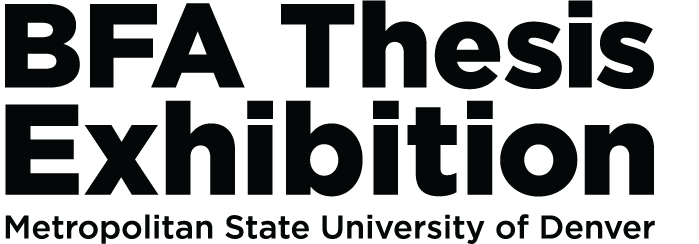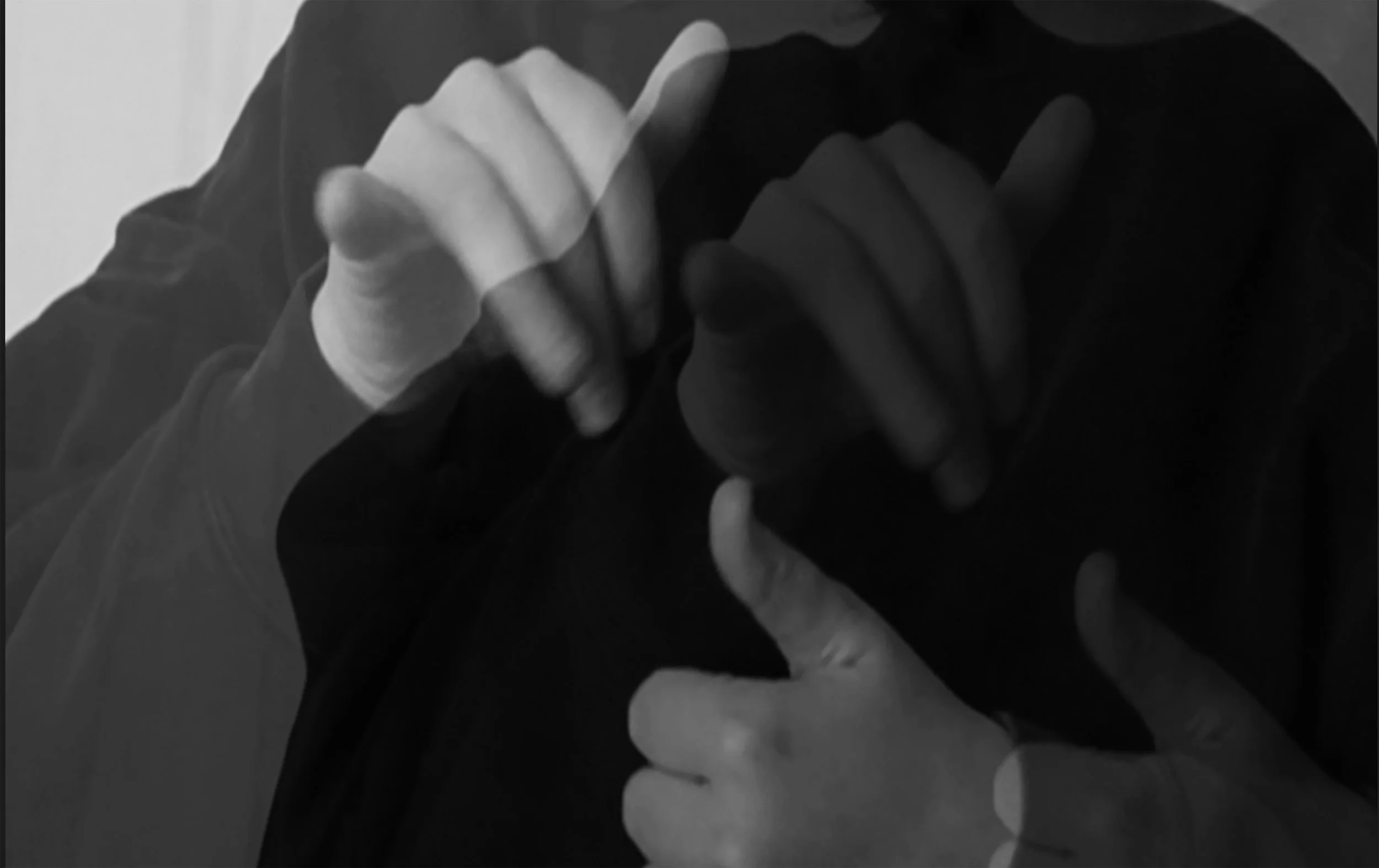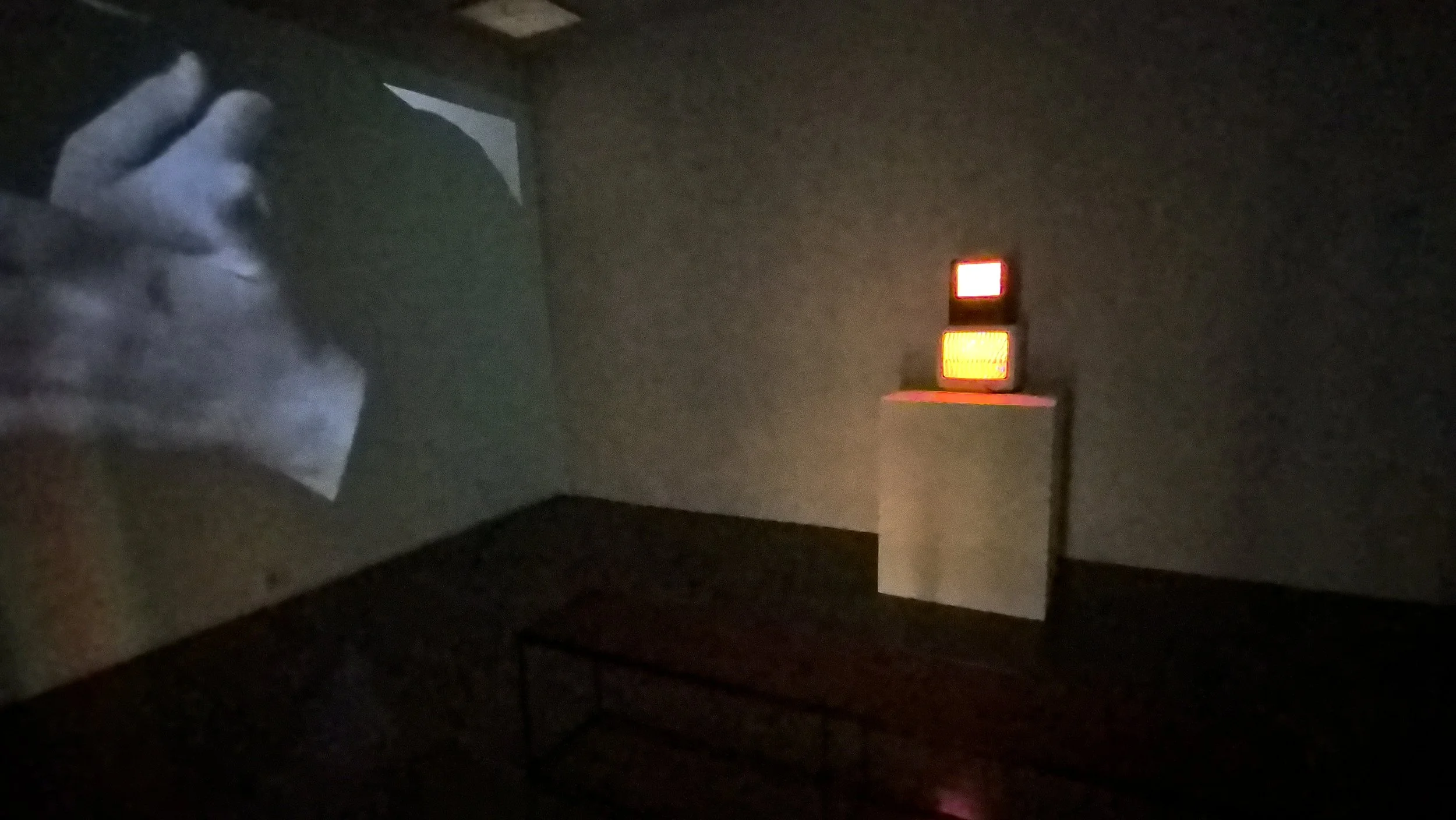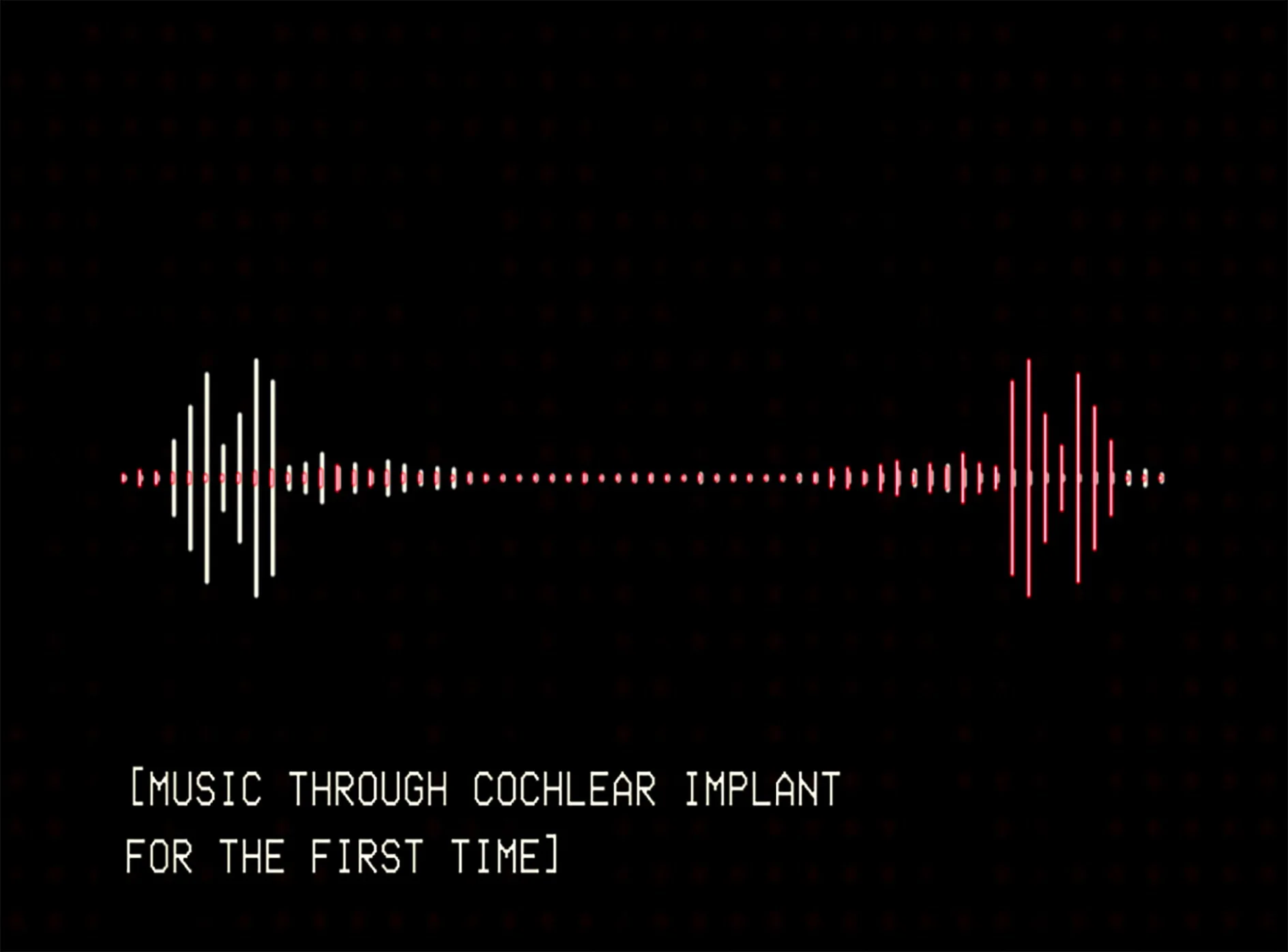In the Between
Laura Swink
In the Between is a multisensory experience that explores the layered identity of individuals living between Deaf and hearing worlds. It focuses on the often-overlooked third space, a gray area where neither Deaf nor hearing culture fully fits but where both leave a lasting imprint of internal conflicts. The work challenges misconceptions about dual identities and highlights the layered experiences of Deaf and hard-of-hearing individuals through theoretical and psychological perspectives.
The installation explores how cochlear implants shape the experience of sound and communication. Manipulated audio on the CRT TVs cuts in and out, reflecting the fragmented and confusing quality of hearing through an implant, which neither erases Deafness nor ensures full access to the hearing world. Projections of ASL on walls highlight the fluidity of visual language and the centrality of visual perception in Deaf experience.
Together, the shifting sounds and moving images express the reality of living with a cochlear implant: not a cure but a complex and often disorienting way of navigating the world. By layering these elements, the work conveys the subtle tensions of dual identity, where silence, sound, and language coexist unequally. The immersive environment reflects the negotiation of culture and identity, showing how perception, experience, and interaction shape understanding. Influences include cultural theory on third spaces and sensory design practices that translate abstract experiences into visual and auditory forms.
The experience of living in-between is both visible and invisible, often overlooked or misunderstood. By emphasizing the gray space between Deaf and hearing identities, In the Between presents a nuanced perspective on communication, culture, and belonging. Living in-between is not only isolating but also rich and dynamic, reshaping how identity is understood. Through the careful integration of visual and auditory elements, the exhibition brings attention to experiences that are often overlooked. More than a reflection on difference, it becomes an invitation to awaken to new ways of seeing, listening, and understanding lives lived with complexity and resilience.
Contact me
laura.sue@live.com
Instagram: @lswink.design






